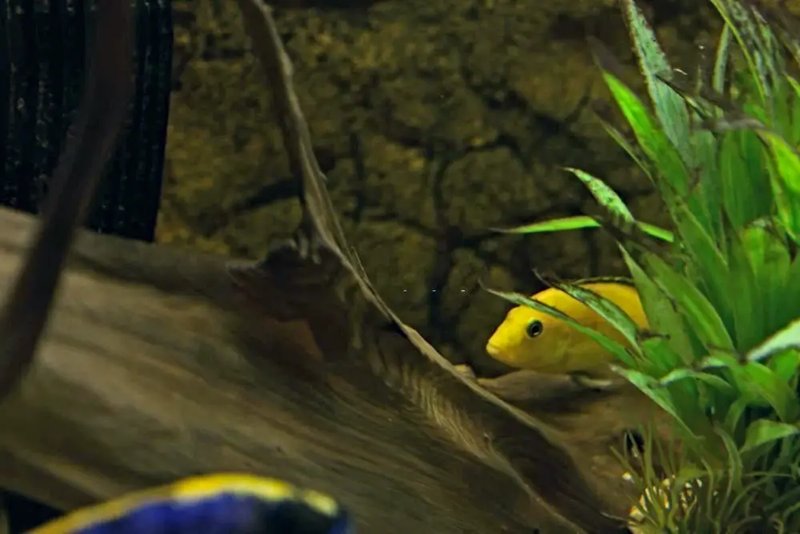
So, what are the common health problems in cichlids, and how can you treat them? Whether you’re a seasoned aquarist or just starting, it’s essential to be aware of these issues. Let’s dive into the swimming pool of fish health and get a better understanding of how to keep your cichlid friends happy and thriving.
Understanding Cichlid Health Issues
When Cichlids show signs of distress, it’s often due to environmental stressors or infections. It’s crucial to know the signs early, as prompt treatment can save your fish. Cichlids can’t vocalize their discomfort, so you need to be observant. Common symptoms include lethargy, lack of appetite, unusual swimming patterns, or visible lesions on their bodies.
Consider your aquarium as their natural habitat—any changes can significantly impact their well-being. Poor water quality, temperature fluctuations, and improper tank mates can lead to health problems, so always keep an eye on their environment. A stable, clean tank with the right conditions is your first line of defense.
Remember, a healthy cichlid is a happy cichlid. Regularly monitoring your fish and their habitat is essential for catching problems early. So, let’s break down some common health problems cichlids face.
Ich (White Spot Disease)
One of the most common health problems in cichlids is Ich, also known as white spot disease. This parasitic infection manifests as small white spots on your fish’s body, fins, and gills. It’s often triggered when fish are stressed due to poor water quality or sudden temperature changes.
Here’s the thing: Ich spreads quickly in an aquarium, so you need to act fast. If you notice those tiny white spots, isolate the affected fish to prevent further spread. You can treat Ich with over-the-counter medications designed for aquatics or by raising the tank temperature gradually to speed up the parasite’s life cycle. Do this by about 2-3 degrees Fahrenheit, and maintain a good aeration during treatment.
Keep in mind that when you treat Ich, you’ll need to remove any carbon filters to allow the medicine to work effectively. Although it may seem like a hassle, this disease can be effectively managed with the right approach!
Fin Rot
Fin rot is another health issue frequently seen in cichlids. It’s characterized by frayed or disintegrating fins, often caused by poor water conditions, stress, or bacterial infections. If your fish are nipping at their fins or you notice any signs of decay, it’s time to take action.
First, assess the water quality in your tank. High levels of ammonia, nitrites, or nitrates can contribute to fin rot. Cleaning the tank and performing regular water changes is essential for restoring your fish’s health.
Next, consider a treatment plan. You can use antibacterial medications specifically designed to target fin rot. Remember to keep the water clean during treatment, as it can speed up healing. Also, providing plenty of hiding spots in the tank can help reduce stress among your fish, promoting better health overall.
Swim Bladder Disease
Have you ever seen your cichlid swimming awkwardly, perhaps floating upside down or struggling to stay submerged? This could indicate swim bladder disease. The swim bladder helps fish control their buoyancy, and any issue with this organ can lead to serious swimming difficulties.
The causes of swim bladder disease can vary from overfeeding to infections or even changes in water temperature. Start by assessing your fish’s diet. You might need to cut back on feeding or switch to a high-quality, well-balanced fish food. Sometimes, gentle changes in water temperature can also help.
If your cichlid continues to suffer, consider isolating it from the main tank and treating it with antibiotic medications. Epsom salt baths can also be beneficial, as they may help reduce swelling and promote buoyancy. Just be sure only to use aquatics-safe Epsom salt and follow the dosage instructions carefully.
Columnaris
Columnaris, often referred to as “Cotton Wool Disease,” is a bacterial infection that can be lethal if not treated promptly. It usually appears as white, fluffy patches on the fish’s body, fins, or mouth. This disease often occurs in crowded or poorly maintained tanks, where stress and poor water quality are commonplace.
If you suspect your cichlid has Columnaris, the first step is to isolate the affected fish to prevent the spread of infection. Increasing water temperatures and adding aquarium salt to the tank can help combat the bacteria.
For more severe cases, you’ll want to use antibiotics specifically designed to treat Columnaris. As always, clear water is crucial for recovery, so keep up with your regular water changes and test for any spikes in toxins.
Preventing Health Problems
Now that you know about some common health problems in cichlids, let’s talk prevention. The best way to keep your fish healthy is through proper tank maintenance and good practices. Here are some key tips:
- Regular Water Changes: Change 10-15% of the water weekly to maintain quality.
- Monitor Temperature: Keep the water temperature stable within the optimal range for your specific cichlid species.
- Test Water Quality: Use test kits to regularly check pH, ammonia, nitrites, and nitrates.
- Avoid Overfeeding: Feed your cichlids a balanced diet and only what they can eat in a few minutes.
- Quarantine New Fish: Before adding any new fish to your tank, keep them in quarantine for at least two weeks to monitor for any signs of disease.
Maintaining a stable environment will make it less likely your cichlids face health challenges. Keep your eyes peeled for any signs of distress, and don’t hesitate to consult with a vet who specializes in aquatic animals if you have concerns.
Caring for cichlids can be a rewarding experience, but it does come with its challenges. Understanding the common health problems in cichlids—like Ich, fin rot, swim bladder disease, and Columnaris—means you’re better equipped to take action when needed. Regular monitoring of their health, along with proper tank care, can help you prevent many issues before they begin.
So grab that net, keep your water clean, and enjoy the vibrant life of your cichlid friends. With a little effort and attention, you can create a thriving environment where your fish can flourish. Happy fishkeeping!

